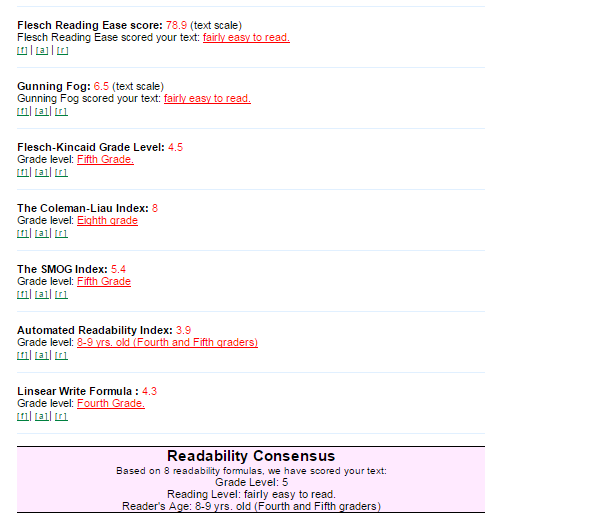
I’m a gihugic fan of figuring out if what you’re writing can be easily understood by your readers. Those readers may be donors or board members or volunteers or any number of people who care–already or potentially–in your cause.
So it’s important that they understand what you’re saying. Seems obvious enough, right?
And yet, sadly (very, very sadly) a lot of nonprofits are putting out gobbledygook rather than easy-to-understand writing.
Most organizations don’t know they’re generating gobbledygook. Makes sense to them, so it must make sense to other people, or so goes the thinking.
I’m here to tell you that just because it makes sense to you, that doesn’t mean it makes sense to anyone else, especially people who are just getting to know your organization. Nope. Sure doesn’t.
Luckily, linguists and researchers and other super smart people have developed readability tests. You put in your words. They tell you how easy it is to understand them.
I’ve extolled the virtues of the Flesch Reading Ease Score for many moons, as did our super fab intern, Tessa, in this post on tools to help you write. But that’s just one reading test. There are others.
For instance, try out this one from Readability Formulas. It puts your text through seven reading tests and then gives you a verdict on the overall reading ease.
I put my most recent blog post on the Engagement Cycle in there and learned it was “fairly easy to read”.
Here’s, specifically, what I learned:

Your goal is for a grade level that’s under Grade 8. That’s not because you think your supporters stopped going to school after Grade 8. It’s because that’s the level at which–regardless of how many degrees you’ve earned–it’s easiest to understand what someone is trying to communicate.
I write day in and day out. And I still check the reading ease of pretty much everything I write. Why? Because I want you to be able to easily understand whatever I’m talking about, so you can start doing it!
Reading ease is where it’s at. Try it out for yourself!